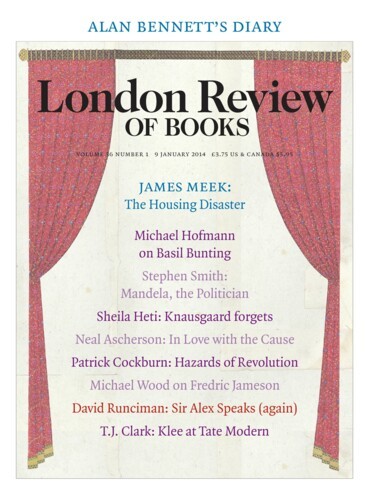Nelson Mandela was released from prison on 2 February 1990. On 26 February F.W. de Klerk ordered the dismantling of a South African nuclear weapons programme which very few people knew existed. At the time the country had six uranium bombs and one more under construction. De Klerk had looked into abandoning the programme a year earlier, but Mandela’s release was plainly instrumental in making it happen. The metallurgist Waldo Stumpf, who had worked on the programme since 1968, was instructed to dismantle the six bombs and to melt down the highly enriched uranium from them and the uncompleted seventh. All the hardware components and the design and manufacturing information were also to be destroyed. The International Atomic Energy Agency was invited to verify the closing down of the programme, which took place over the next two years. South Africa is the only country to have built nuclear weapons and then voluntarily given them up, and this is something else we can thank Mandela for.
The South African programme was started for what were claimed to be peaceful purposes, but by 1978 P.W. Botha, who was then the defence minister, had decided the weapons should be used for deterrence. One perceived threat was the presence of Cuban troops in Angola. As is generally the case in such matters, it’s not clear what use an atomic bomb would have been. Oppenheimer once said of the hydrogen bomb that the targets were too small. The South Africans decided to use enriched uranium rather than plutonium, which meant it was necessary to enhance the percentage of uranium-235 in the uranium they mined. They chose a method never used before or since, at least not on an industrial scale, called a ‘stationary wall centrifuge’. In the usual gas centrifuge the gas is put into a rapidly rotating cylinder. By the South African method it is injected at very high velocity into a stationary curved tube. The effect is the same as the centrifuge, but it’s an inefficient process. The so-called Y Plant, which had a serious accident that closed it down between August 1979 and April 1980, produced enriched uranium until February 1990.
Stumpf told me that ‘on the enrichment project naturalised South Africans were allowed to work; on the weapons project, only South African-born citizens were allowed. Second, on both projects one had to obtain a “high security” clearance from the security authorities. This excluded many white but practically all black citizens.’ One imagines the rules were more lax when it came to deciding who could work in the uranium mines.
There have been persistent rumours that the Israelis had a hand in the South African programme. Stumpf vehemently denies this and insists that there was never a joint Israeli and South African nuclear test. Indeed, he claims, there was no South African test at all. But the uranium bomb dropped on Hiroshima, whose design the South Africans were trying to emulate, had never been tested either.
Send Letters To:
The Editor
London Review of Books,
28 Little Russell Street
London, WC1A 2HN
letters@lrb.co.uk
Please include name, address, and a telephone number.

